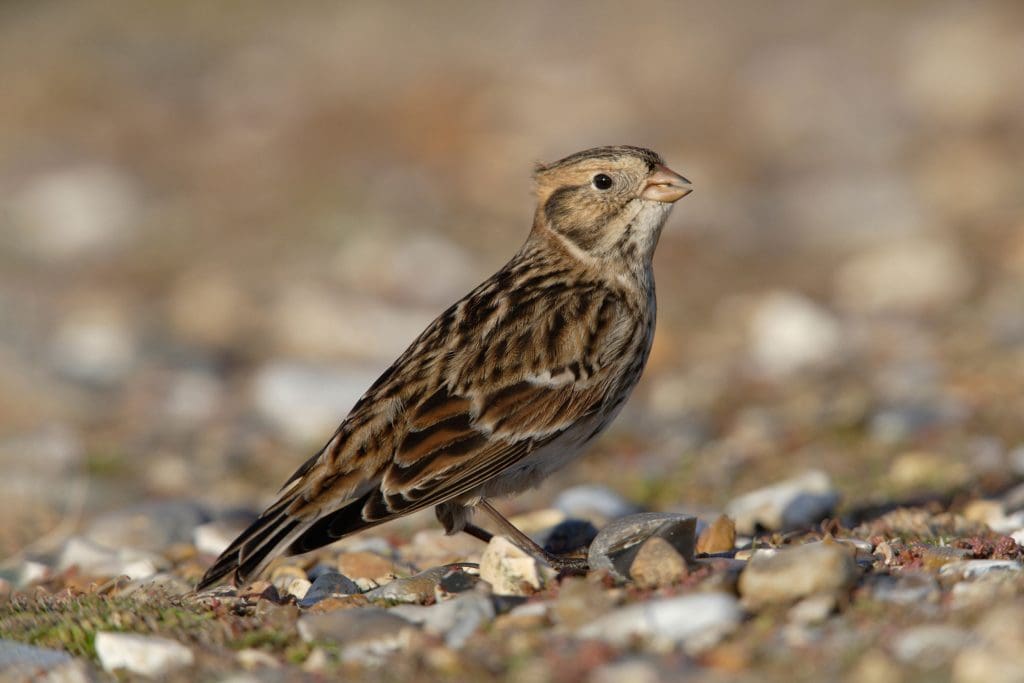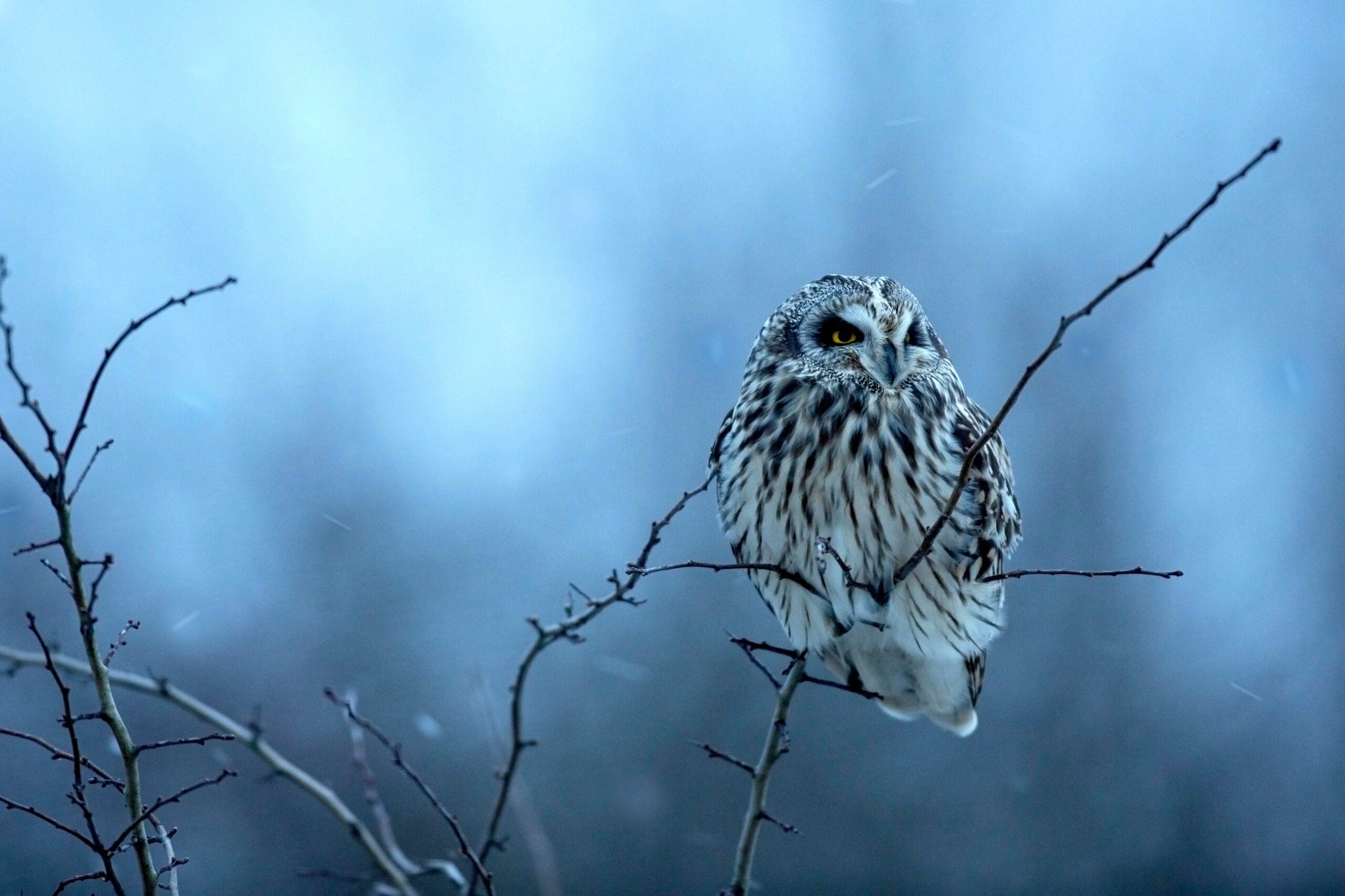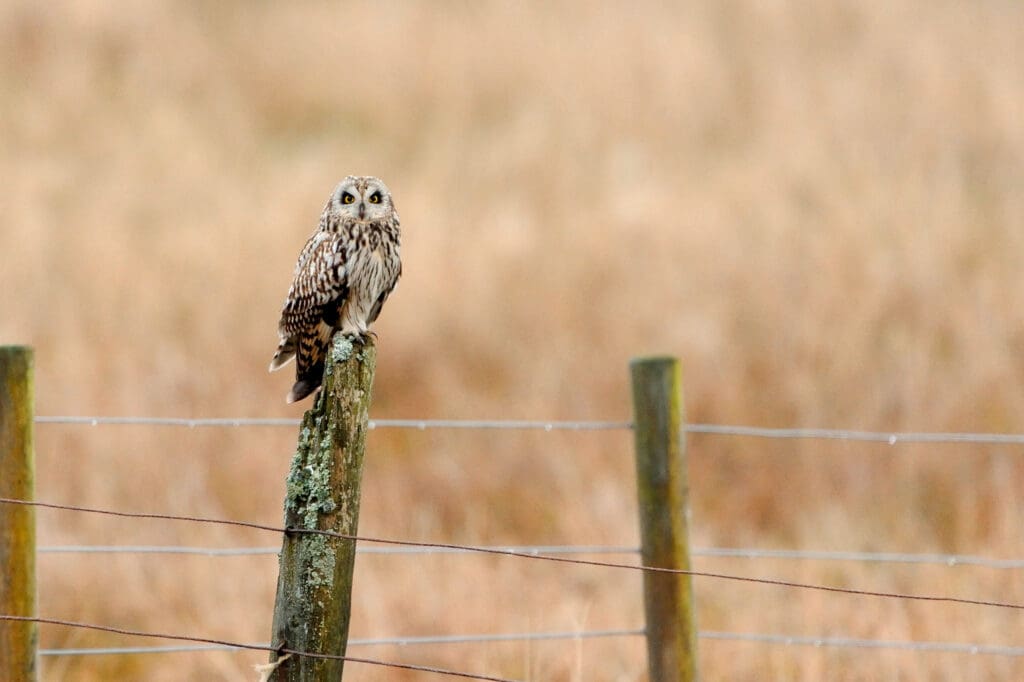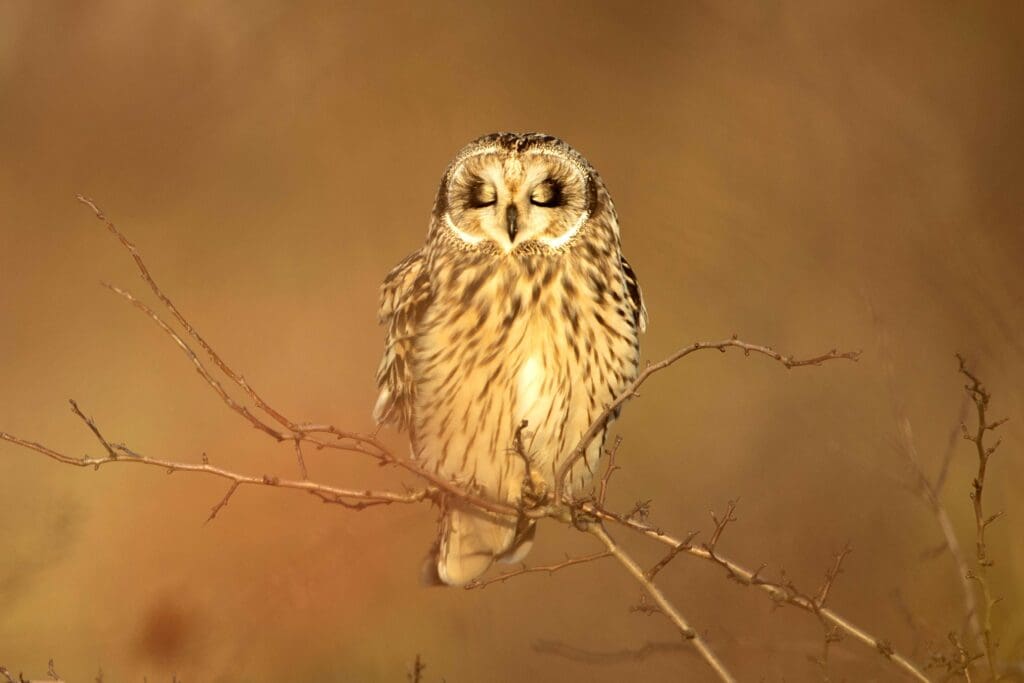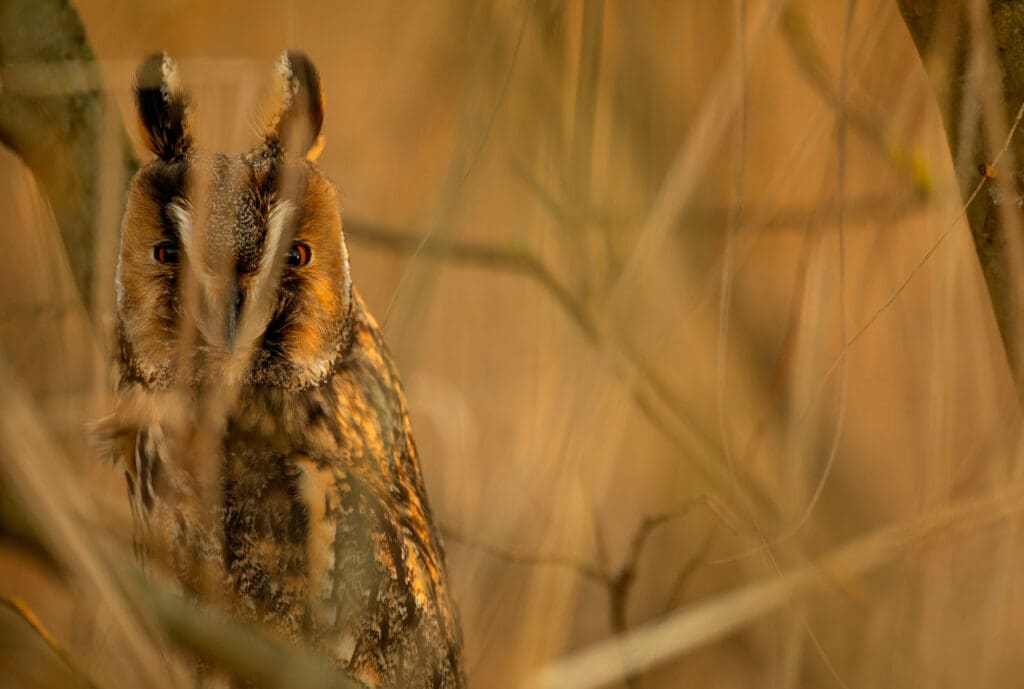Owls on the move
When we think about birds making great migratory journeys, owls don’t immediately spring to mind. But a large number of Short-eared Owls from Germany, Holland, Iceland, Scandinavia and Russia do travel to the UK to benefit from plentiful and easily accessible food during the winter. Sometimes they’re found resting on oil rigs or boats as they make the long journey here over the sea.
And if you’re lucky, you might even witness them arriving on the coast. The RSPB’s Mark Ward reports seeing 54 fly in from the sea at Holme Dunes in Norfolk in early October. Birdwatchers along the same coastline also watched owls arrive on the same day.
‘I ended up spending eight hours in virtually the same spot due to a migration of epic proportions happening all around me’
Like many birders at this time of year, Mark had waited for easterly winds which he knew would be likely to bring fresh arrivals from the continent. On Sunday 8 October the wind turned to a light easterly, and the migration floodgates opened!
Mark says, “After witnessing thousands of newly-arrived Scandinavian Redwings flying over my garden in the first two hours of daylight, I decided to head to Holme Dunes where I ended up spending eight hours in virtually the same spot due to a migration of epic proportions happening all around me.”
This was to be an epic birding day. Mark saw 65 different species migrating past at sea, or overhead on land. But one species stood out: Short-eared Owl. Early on, he picked up four of these long-winged hunters arriving together over the sea, slowly making their way towards land as they were passed by flocks of Wigeon and Dark-bellied Brent Geese streaming in from north-east Europe. The owls touched down among the dunes around Mark, with the final bird arriving as dusk fell. What an experience!
Many of these birds will linger by the coast overwinter, hunting over saltmarsh and wet grassland for voles and other small prey. They’ll roost in small groups, usually on the ground.
The owls that have come for winter have flown from areas where frozen ground and snow would severely reduce their access to small mammals. Vole numbers are cyclical. Some years there are few, meaning fewer owls successfully fledging. In other years, apparently including 2023, there are many voles, so we see more owls. Wintering Short-eared Owls arrive around the same time as another long distance traveller, the Woodcock, which gives them another old nickname ‘Woodcock Owl’.
A Short-eared Owl hunting over the wetlands of RSPB Wallasea Island in Essex. Video: RSPB.
Breeding and numbers
As the days lengthen, our winter visiting owls will return home, and those that spend the whole year with us will be thinking about raising a brood. Like their moorland or grassland neighbours, Hen Harriers, Short-eared Owls ‘skydance’. For the owls this involves swooping upwards, high in the sky, before dropping and clapping the wings together. This courtship dance is carried out by the males, with the females watching from below and judging the performance.
The owls nest on the ground from April to July, often pairing with a different mate each year. They’ll raise four to seven chicks, which leave the nest after around four weeks. Like many other birds of prey, owls have ‘asynchronous hatching’. This means the female owl produces eggs over several days. These will be incubated by their parents as soon as they’re laid. Once the eggs have hatched, the owl’s nest typically contains chicks of different sizes, with the smallest up to around two weeks younger than the largest. This strategy means that if the food supply available to the owls varies, at least some of the owlets will survive.
Short-eared Owls are on the UK ‘Amber list’ reflecting concerns over the decline of their European populations. They need open grassy and moorland areas and so it’s likely that afforestation, adding more trees to a landscape, can reduce their numbers.
Small numbers of Short-eared Owls have been confirmed as having been subjected to illegal persecution in the UK, with six being killed since 2018. However, these were just the cases that RSPB were alerted to and subsequent evidence was found. Intelligence suggests the annual number of birds shot on some upland estates is actually much higher.
‘It’s thought the owls may raise their ‘ears’ according to their mood, perhaps if they’re excited or alarmed’
Short-eared Owl ID
So, how do you know you’re looking at a Short-eared Owl?
Short-eared Owls get their name from the tufts on the top of their heads that look like ears, similar to those of the Long-eared Owl. Both species share the old name ‘Cat Owl’ because of the feline appearance those tufts give them. However you’re unlikely to see the tufts, as they’re usually flattened down against the top of the head. It’s thought the owls may raise their ‘ears’ according to their mood, perhaps if they’re excited or alarmed.
Although they are mostly nocturnal or crepuscular (hunting at dawn and dusk), they’re often seen during the day. An owl on the wing in daylight over coastal marshes and wetlands during winter is likely to be a ‘Shortie’. However, Barn Owls can also been seen in these habitats during winter too.
But it is fairly easy to tell these species apart. Short-eared Owls have mottled brown bodies, much darker upper on top of the wings (which are also longer) and bright yellow eyes. Whereas a Barn Owl is much paler altogether, with a white face and black eyes.
Long-eared Owls do look similar, but their ‘ear’ tufts are, as the name suggests, longer and usually raised. Their eyes are orange and their back and wings more densely speckled than the Short-eared Owl, and in flight you may see that the edge of the wing lacks the white border on the wing of the Shortie. Long-eared Owls are less likely to be out during the day and tend to prefer a wooded habitat. Here, their excellent camouflage and ability to stretch themselves up against trunks and branches makes them very hard to find.
However, this looks like it will be a great winter for watching Short-eared Owls.
Good sites for owl watching from November onwards include the RSPB nature reserves at:
Exminster and Powderham Marshes
Have you seen a Short-eared Owl this winter?
If you manage to get a photo of a Short-eared Owl this winter, we’d love to see it! Email your photo to rspbmagazine@rspb.org.uk and we may include it here to share with other RSPB members.
You might also like
Comment: Birding is better together
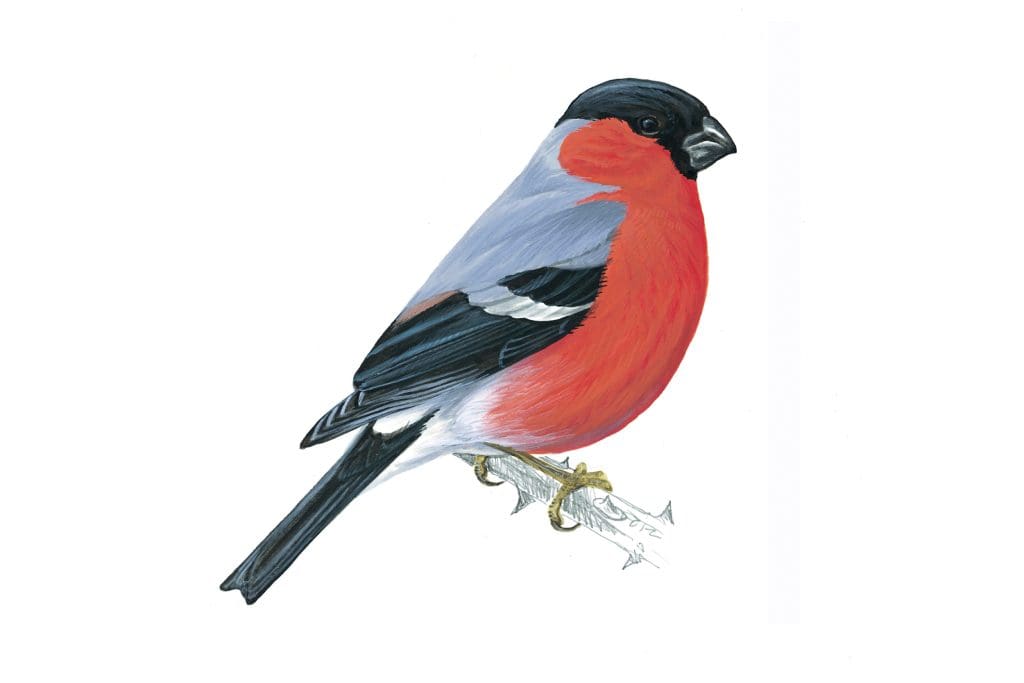
How to identify finches
